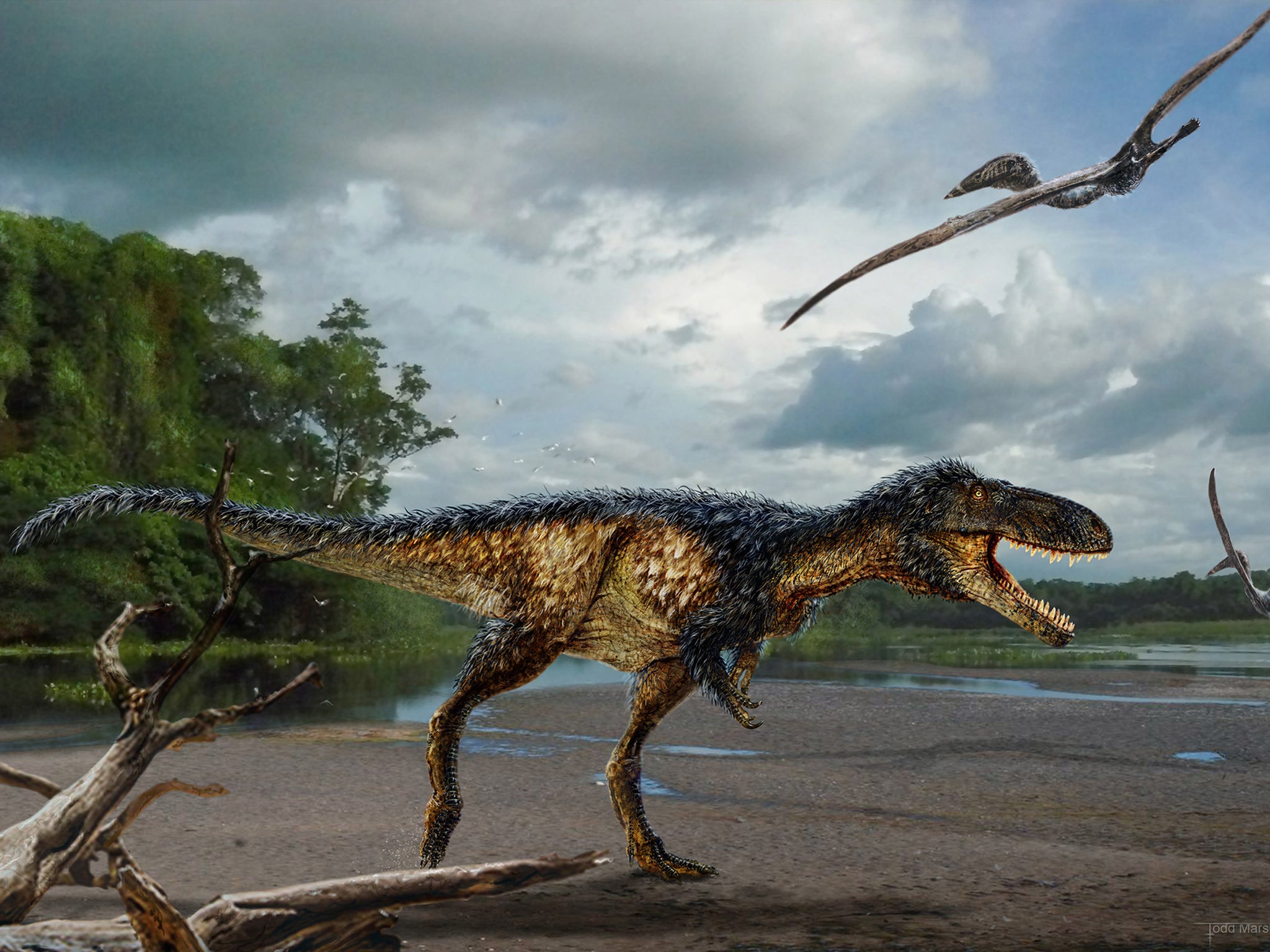Tyrannosaurus rex: Discovery of horse-sized dinosaur sheds light on evolution of famous predator
Species from which T. rex evolved had highly developed brains but much smaller bodies than their famous descendants

The discovery of a new species of horse-sized dinosaur has shed fresh light on the evolution of the Tyrannosaurus rex, suggesting that the famous predators had to “get smart before they got big”, according to newly published research.
The dinosaur species unearthed in northern Uzbekistan, from which the T. rex later evolved, had highly developed brains and sharp senses but much smaller bodies than their more famous descendants, a study by a team of Scottish scientists has found.
The discovery is significant because the remains, which were found in the Kyzylkum desert, fill a 20 million year gap in the fossil record of tyrannosaurs.
The species, Timurlengia euotica, lived about 90 million years ago and was about the size of a horse, according to the study published in the journal Proceedings of the National Academy of Sciences.
The newly-discovered dinosaurs had long legs, a skull studded with sharp teeth and was probably a fast runner. The fact that the species was still small around 80 million years after tyrannosaurs first appeared suggests that they only became large at the end of their evolutionary history, when they dominated the top of the prehistoric food chain, according to a team of palaeontologists led by researchers at the University of Edinburgh.
“The ancestors of T. rex would have looked a whole lot like Timurlengia, a horse-sized hunter with a big brain and keen hearing that would put us to shame,” said Dr Steve Brusatte of the university’s School of GeoSciences, who led the study. “Only after these ancestral tyrannosaurs evolved their clever brains and sharp senses did they grow into the colossal sizes of T. rex. Tyrannosaurs had to get smart before they got big.”
The work was carried out in collaboration with researchers at the Russian Academy of Sciences, Saint Petersburg State University and the National Museum of Natural History, in the United States.
The museum’s Professor Hans Sues said: “Timurlengia was a nimble pursuit hunter with slender, blade-like teeth suitable for slicing through meat. It probably preyed on the various large plant-eaters, especially early duck-billed dinosaurs, which shared its world.”
Join our commenting forum
Join thought-provoking conversations, follow other Independent readers and see their replies
Comments